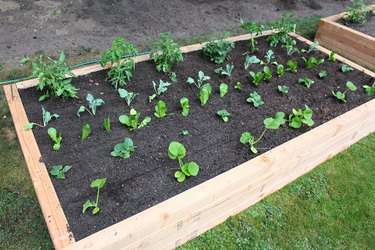
Planting a raised vegetable garden is easier than you think, and it comes with many benefits for yourself and your plants. Raising your garden bed brings your plants closer to eye level and thus saves your back from excessive bending and twisting. Your plants will enjoy their freedom from problematic soil or contaminants that may be present in the ground, and they'll thrive from the improved drainage that comes with a raised garden bed.
It's so easy to get started! All you need are a few seeds and some soil. With a little water and some sunlight from Mother Nature, you'll be on your way to harvesting vegetables in no time.
Video of the Day
Video of the Day

1. Find the best location
For best results, place your raised garden bed in a level area with at least six to eight hours of sunlight. Be sure to have a water source nearby so you'll be able to water your garden easily.
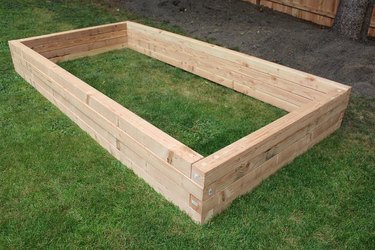
2. Smother the weeds
If you will be planting over grass or weeds, simply lay down cardboard to smother the grass or weeds. Over time, the cardboard will decompose and enrich your garden soil.
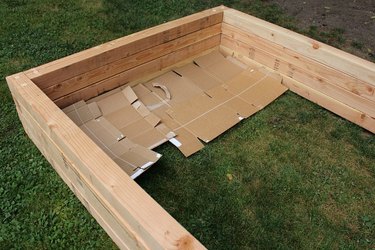
3. Add the soil
Fill your raised vegetable garden bed with a good mixture of compost, manure, and garden soil. You can also check with your local landscape company for deals on soil. Most landscape companies sell garden soil blends by the yard. The amount you need will depend on how large your garden bed is and how deep you need your beds to be.
If you are planting root crops, like carrots and parsnips, you'll want at least 18 inches of soil so the roots can develop properly. However, if you are growing vegetables with shorter root systems, like lettuce and peas, 4 to 6 inches of soil is adequate. When in doubt, check your seed packets or plant tags for depth requirements.
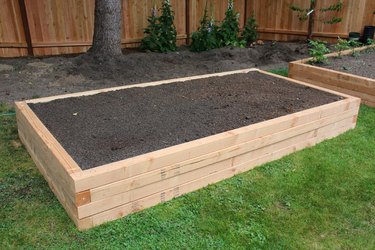
4. Consider your raised bed vegetable garden layout
Now comes the fun part: placing your plants. If you have OCD, you can draw out a map detailing where every plant should go. If you don't, simply lay out your plants from tallest to shortest. Your planting start date will depend on where you live.
Tip
Check plant tags and seed packets to determine how much distance you need between each plant for optimal growth.
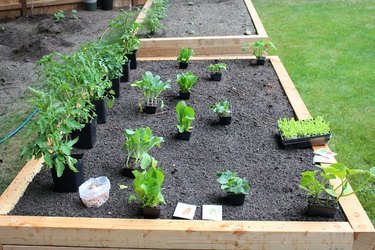
5. Research companion planting
Not all plants get along, so take the time to research what plants benefit from each other. For instance, tomatoes grow well next to carrots, basil, onions, and chives. By planting vegetables with root systems that don't interfere with one another, you're crops will grow better.

6. Maximize your garden space
To maximize your growing space, plant root crops, like carrots, beets, turnips, and parsnips, in rows between plants that you will harvest sooner. Beans, cucumbers, lettuce, and summer squash are typically ready to harvest in 30 to 50 days after planting. Since most root crops take anywhere from 50 to 100 days, this will maximize your growing potential. Check individual seed packets or plant tags for the recommended spacing distance and approximate days until harvest.

7. Sit back and relax
Once your garden box is planted, you can sit back and relax. You'll need to keep your garden bed watered and weeded, of course, but once you have the garden planted, all the hard work is finished!
